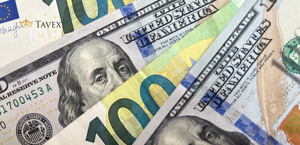Tavex uses cookies to ensure website functionality and improve your user experience. Collecting data from cookies helps us provide the best experience for you, keeps your account secure and allows us to personalise advert content. You can find out more in our cookie policy.
Please select what cookies you allow us to use
Cookies are small files of letters and digits downloaded and saved on your computer or another device (for instance, a mobile phone, a tablet) and saved in your browser while you visit a website. They can be used to track the pages you visit on the website, save the information you enter or remember your preferences such as language settings as long as you’re browsing the website.
| Cookie name | Cookie description | Cookie duration |
|---|---|---|
| tavex_cookie_consent | Stores cookie consent options selected | 60 weeks |
| tavex_customer | Tavex customer ID | 30 days |
| wp-wpml_current_language | Stores selected language | 1 day |
| AWSALB | AWS ALB sticky session cookie | 6 days |
| AWSALBCORS | AWS ALB sticky session cookie | 6 days |
| NO_CACHE | Used to disable page caching | 1 day |
| PHPSESSID | Identifier for PHP session | Session |
| latest_news | Helps to keep notifications relevant by storing the latest news shown | 29 days |
| latest_news_flash | Helps to keep notifications relevant by storing the latest news shown | 29 days |
| tavex_recently_viewed_products | List of recently viewed products | 1 day |
| tavex_compare_amount | Number of items in product comparison view | 1 day |
| Cookie name | Cookie description | Cookie duration |
|---|---|---|
| chart-widget-tab-*-*-* | Remembers last chart options (i.e currency, time period, etc) | 29 days |
| archive_layout | Stores selected product layout on category pages | 1 day |
| Cookie name | Cookie description | Cookie duration |
|---|---|---|
| cartstack.com-* | Used for tracking abandoned shopping carts | 1 year |
| _omappvp | Used by OptinMonster for determining new vs. returning visitors. Expires in 11 years | 11 years |
| _omappvs | Used by OptinMonster for determining when a new visitor becomes a returning visitor | Session |
| om* | Used by OptinMonster to track interactions with campaigns | Persistent |
| Cookie name | Cookie description | Cookie duration |
|---|---|---|
| _ga | Used to distinguish users | 2 years |
| _gid | Used to distinguish users | 24 hours |
| _ga_* | Used to persist session state | 2 years |
| _gac_* | Contains campaign related information | 90 days |
| _gat_gtag_* | Used to throttle request rate | 1 minute |
| _fbc | Facebook advertisement cookie | 2 years |
| _fbp | Facebook cookie for distinguishing unique users | 2 years |
What Is a Global Reserve Currency, and Why Is It Useful?

There are approximately 180 currencies in circulation worldwide. However, the average person encounters only a handful of these, largely depending on how frequently and how far they travel.
When we think about currencies, the first that typically come to mind are the euro, the US dollar, the British pound, the Canadian dollar, the Swiss franc, and the Japanese yen. Why? Because these currencies play a pivotal role in the global financial system – they are known as global reserve currencies.
But what exactly is a global reserve currency? Are there others beyond this list? What factors elevate a currency to this status? This article explores these questions, shedding light on why some currencies dominate and what challenges threaten their status as world reserves.
What Is a Global Reserve Currency?

Every national currency is held as a reserve in another country’s treasury or central bank. However, not all currencies qualify as global reserve currencies. According to the International Monetary Fund (IMF), a global reserve currency must:
- Be widely used for international payments.
- Have high liquidity in global foreign exchange markets.
This definition narrows the field significantly, explaining why the most frequently traded currencies – the US dollar, euro, Japanese yen, and others – constitute over 80% of all foreign exchange transactions.
What Makes a Currency a Global Reserve Currency?

The IMF identifies four primary criteria that determine whether a currency can achieve global reserve status:
1. Economic Size of the Issuing Nation
The size and strength of the issuing economy are critical. Historically, successful economies – whether through trade, innovation, or military power – have garnered trust in their currencies.
For example, the US dollar dominates because it is backed by the world’s largest economy
Similarly, historical currencies like the British sovereign or the Venetian ducat reflected the economic power of their time. Today, contenders like China are challenging the dollar, leveraging their economic growth and increasing global influence.
2. Reliability of the Issuing Nation
A currency’s acceptance also hinges on the trustworthiness of the issuing government or institution. For instance, the euro remains a global reserve currency not just because of the European Union’s economic size but also due to the perceived reliability of the European Central Bank.
3. Demand for International Payments
Global trade relies heavily on stable and widely accepted currencies. The massive daily volume of foreign exchange transactions – estimated at $7 trillion – underscores the importance of reserve currencies in facilitating trade. For example, China’s yuan saw a surge in demand after the country joined the World Trade Organisation in 2001, as global businesses sought yuan for transactions.
4. Inertia
A less obvious but crucial factor is inertia. Once a currency establishes itself as a global reserve, it benefits from the financial system’s reluctance to transition to alternatives. For example, the US dollar has retained its status since the 1930s, despite challenges from currencies like the Japanese yen in the 1980s and the euro after its introduction in 1999.
Managing Global Reserves

Central banks are responsible for managing global reserves, which include both foreign currency and assets. These reserves serve several purposes:
- Liquidity: Reserves must be easily convertible to meet unexpected payment needs.
- Safety: Investments are made in low-risk assets, such as government bonds.
- Profitability: Though secondary to liquidity and safety, generating returns on reserves is still a consideration.
It’s no surprise that over 70% of international reserves are held in currencies issued by stable economies like the US, Eurozone, Japan, the UK, and Switzerland.
Who Manages Reserves?
While central banks usually manage reserves, there are exceptions.
In countries like the US, UK, and Japan, reserves are held directly by the Treasury
This arrangement can expose reserves to political influences, as seen in the case of the Federal Reserve, which transferred its gold reserves to the US Treasury in 1934.
The Evolution of Foreign Exchange Reserves
Global reserves have evolved significantly over time. For example, after the Bretton Woods Agreement in 1944, the US dollar became the dominant global reserve currency, backed by gold until 1971. Even after the gold standard was abandoned, the dollar maintained its status, partly due to agreements like the Petrodollar Agreement with Saudi Arabia in 1974.
The Role of Gold in Global Reserves

Gold continues to play a vital role in global reserves. Unlike fiat currencies, gold is not subject to counterparty risk or inflation, making it a valuable asset for central banks. Recent years have seen record gold purchases by countries like China, Poland, and Turkey. Their motives vary:
- China seeks independence from Western-dominated financial systems.
- Poland views gold as a safeguard against systemic risks.
- Turkey uses gold to stabilise its economy amid hyperinflation.
Despite rising gold prices, central banks continue to buy, recognising its long-term value and resilience.
Why Are Global Reserve Currencies Useful?
The utility of reserve currencies extends beyond international trade
For individuals, they provide stability and reliability in situations of economic crisis. In countries facing hyperinflation—such as Venezuela or Turkey – citizens often turn to reserve currencies like the dollar or euro for transactions, despite government restrictions.
On a broader scale, reserve currencies enable nations to:
- Conduct foreign trade smoothly.
- Anchor their monetary policies.
- Maintain economic stability.
Conclusion
Global reserve currencies are critical to the functioning of the global economy. Their dominance reflects the economic strength, reliability, and international demand for the issuing nation’s currency. While the US dollar, euro, and a few others continue to dominate, rising powers like China are reshaping the landscape.
At the same time, gold remains a steadfast component of reserves, offering protection against inflation and financial instability. As the global economy evolves, discussions around central bank digital currencies (CBDCs) and their potential impact on reserve systems will become increasingly relevant.
For now, global reserve currencies like the US dollar and euro remain indispensable, bridging economies and providing stability in a rapidly changing world.
















